Capitol Reef National Park: Number 4 of the Big 5
As we move through the Big 5 National Parks in the state of Utah, next up is Capitol Reef National Park. We just got back from re-visiting both Bryce Canyon National Park and Capitol Reef – both lovely – and connected by one of the most scenic drives anywhere, along Scenic Highway 12.

Capitol Reef National Park
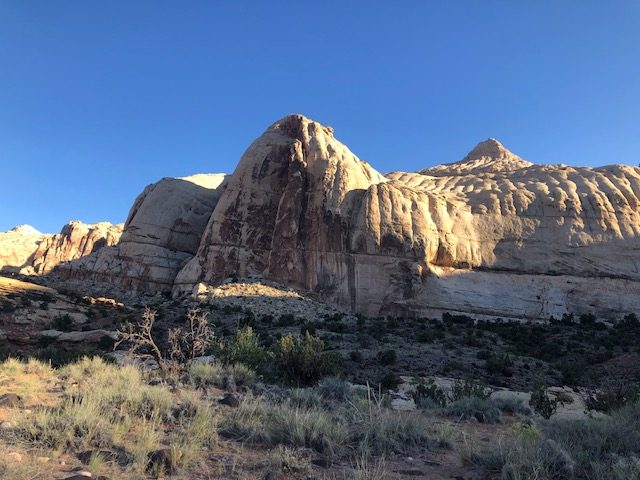
Named after the large domes you may see atop a capitol building, Capitol Reef National Park includes an uplift that extends for 100+ miles – massive rock cliffs of vibrant hues that seemingly go on for miles. Very different from what you see at Bryce Canyon – here you look up, not down, and the rocks are smooth and giant, not the delicate hoodoos and fantastic shapes you see at Bryce.
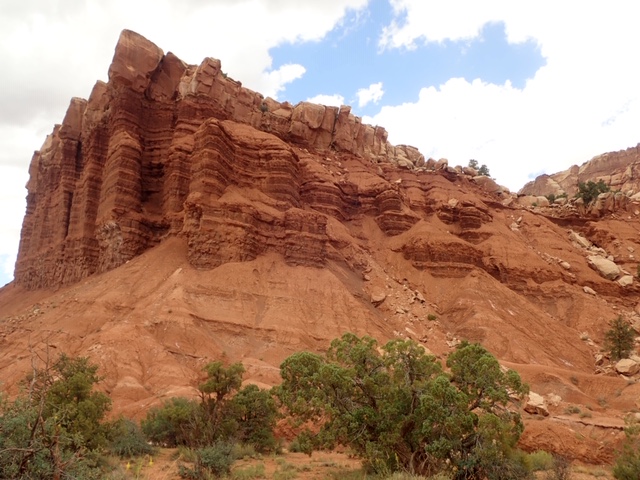
Tale of Two Parks
When you visit Capitol Reef National Park, you may think of it as two unique parks.
Fruita
The visitor center is inside the park at a place called Fruita in a beautiful green valley along the Fremont River. Here, early settlers had planted fruit orchards in the 1880’s – still producing to this day – and built a small community on this fertile land. While the national park may have been created to preserve the geological formations, it also preserves a piece of living history.
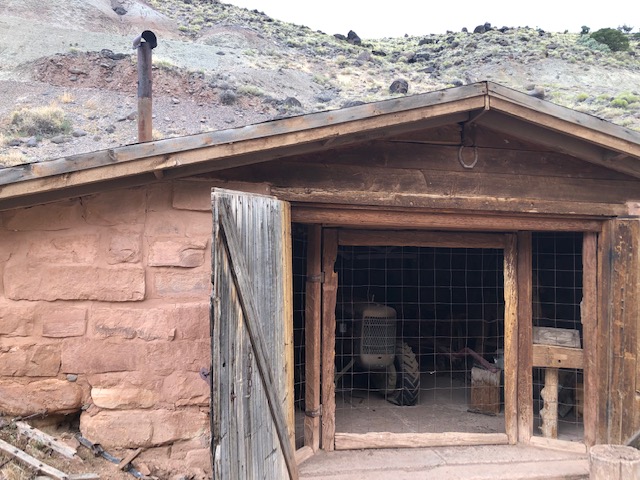
In Fruita, you can visit the old barn, blacksmith shop, school house and the Gifford House – where you can buy fresh made pies and preserves made from the fruit harvested right there – apples, cherries, peaches, pears, plums, apricots. And in season, visitors are even invited to pick their own. The National Park Service has done an amazing job of keeping all the trees healthy, maintaining them using historically accurate techniques.
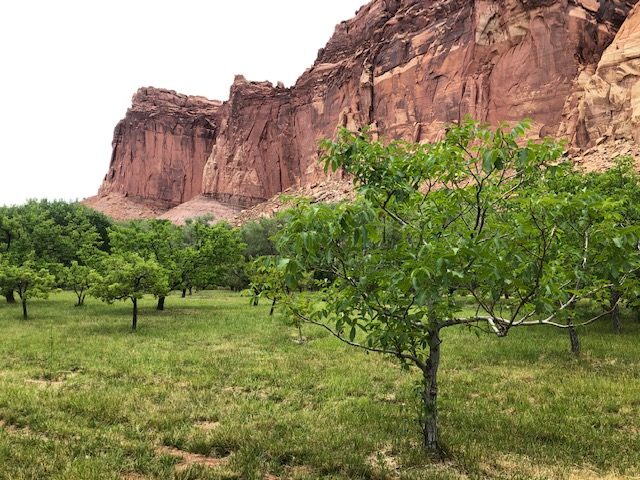
Along with stopping by the visitor center, be sure to take some time walking around or just sitting at the picnic area in this lush valley. You’ll be joined by deer… relaxing in the sun or wandering around grazing. Many joined us in the campground. We sat in our campsite and watched them romp around and stand on their hind legs trying to get fruit off the trees.

You will also see yellow-bellied marmots. Look for them by the “Marmot Crossing” sign. It is fun to watch them scamper around the rocks and graze in the orchards. We loved the big fat one sunbathing on a rock.
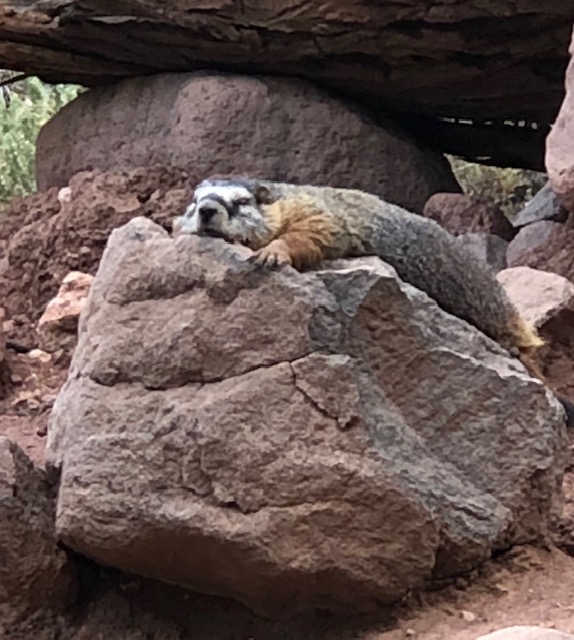
Capitol Reef
From Fuita, take the 10 mile scenic drive and you will experience the park’s main attraction – you are driving along the fold in the earth. When the paved road ends, continue on for 2 1/2 miles through a slot canyon along a winding dirt road. (It is okay for most cars – very well maintained. There is no turnaround for large vehicles.) At the end of this road you can park and walk along a short trail. There are petroglyphs on the walls as well as names of passers by from the wagon train days. You can just picture wagon trains working their way through the sand in these narrow canyons.

This is an easy trail to walk on… entirely flat in a sandy wash. There are over a dozen designated trails in the park, ranging from easy to strenuous. It really depends on how much time you have. We were happy to have had a couple days in the park so that would could experience multiple trails.
The harder trails have more elevation gain, but you certainly are rewarded with amazing views and there are far fewer people.

We got going really early and did Hickman Bridge when no one was there – a 133 foot long sandstone bridge, towering 120 feet over your head. You can walk right through it.
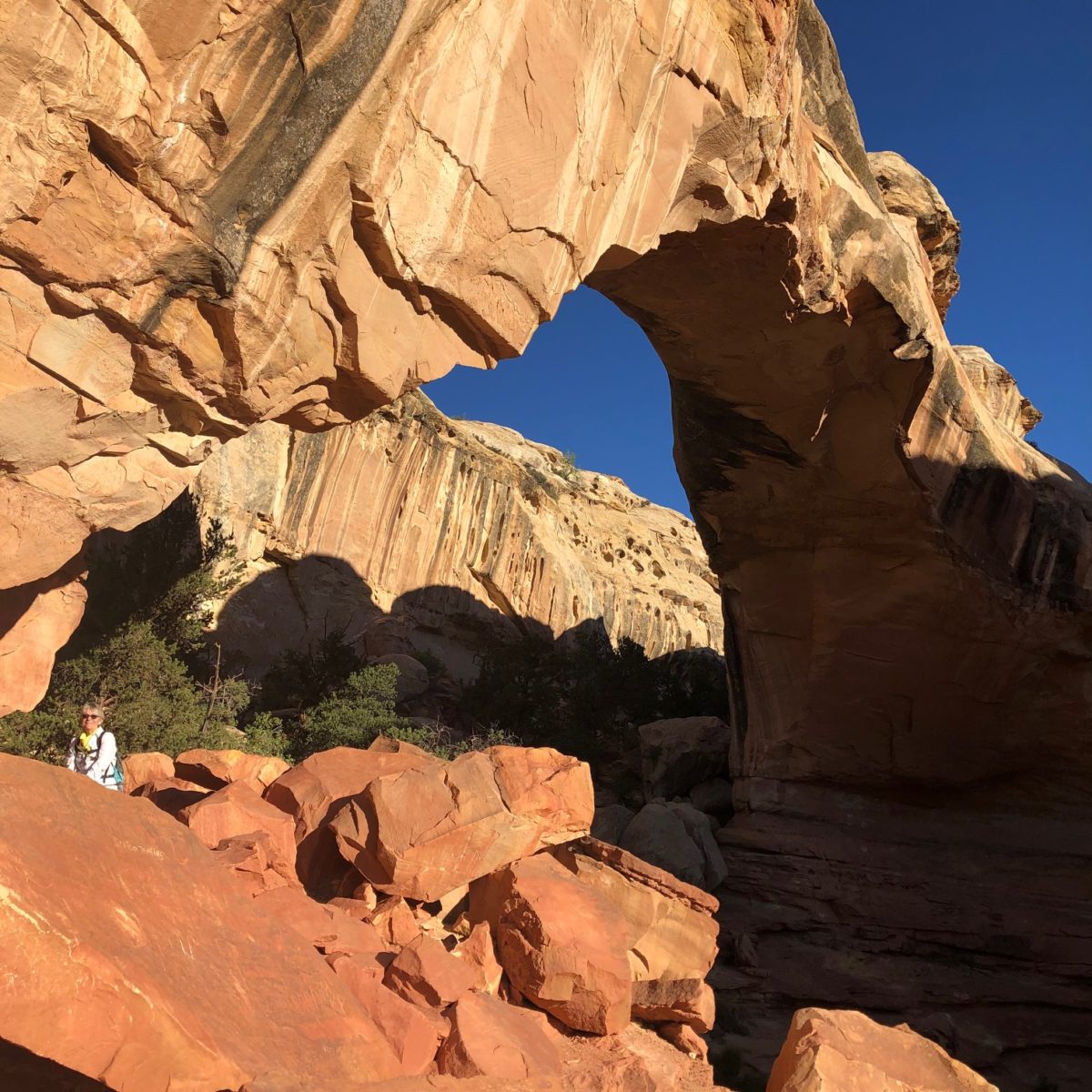
After Hickman Bridge, we took the Navajo Knobs trail out and back.
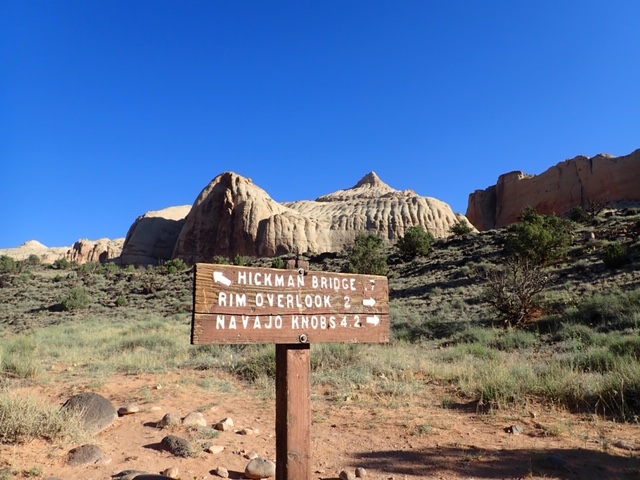
From there, you can see the top of Hickman Bridge and then you wind in and out of canyons to the Rim Overlook and then the Navajo Knobs overlook where you can see 360 degrees. That’s a long hike, but well worth the effort.
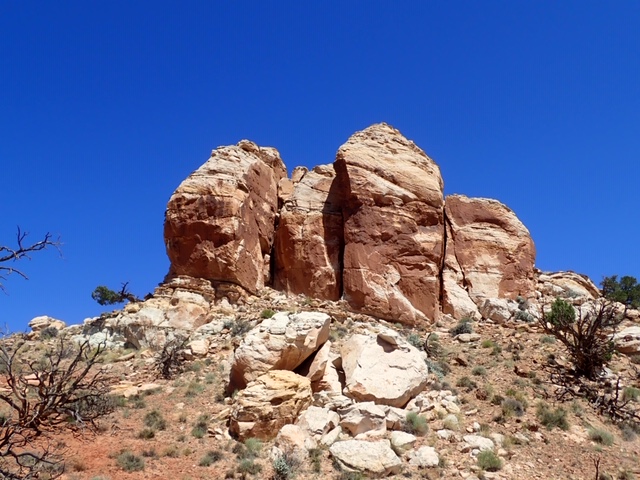
And great bonus…. a dip in the Fremont River to cool off at the end!
Celebrate Capitol Reef’s anniversary
One of the least visited of the big 5 national parks in Utah, if you get a chance to visit Capitol Reef in 2021 you’ll be there to celebrate its 50th anniversary. Established originally as a National Monument in 1937, it was re-designated to be a National Park in 1971.
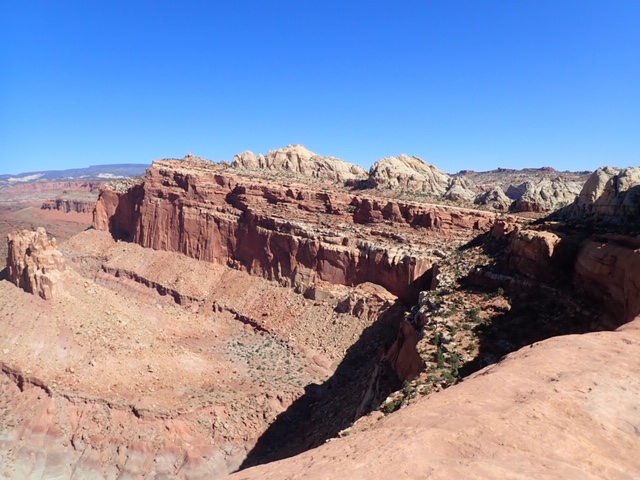
When you visit, there is a small campground in Fruita and there is lots of “dispersed” camping in the national forest or BLM lands that border the park. There are also lots of lodgings in nearby towns.
We really encourage any visitor to southern Utah to include this park on the itinerary. We have visited here multiple times and each time we have seen something different.
Need Help Planning Your Visits?
If you would like to explore this or other National Park Units, but need a bit help in the planning, please give us a call at (480) 609-3978. We are happy to offer customized trip planning.
2 thoughts on “Capitol Reef National Park: Number 4 of the Big 5”
Comments are closed.